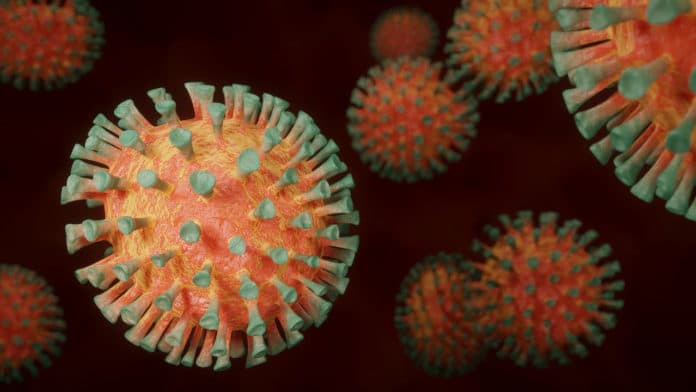SARS-CoV-2 has a zoonotic origin and was transmitted to humans via an undetermined intermediate host, leading to infections in humans and other mammals. To enter host cells, the viral spike protein (S-protein) binds to its receptor, ACE2, and is then processed by Transmembrane protease, serine 2 (TMPRSS2). So far, little work has been done to assess the animal reservoirs of SARS-CoV-2 or the virus’s potential to spread to other species living with.
A new study by the University College London modeled how the virus might infect different animals’ cells. Scientists determined that dozens of mammals could be susceptible to SARS-CoV-2.
The study reported that almost 26 animals regularly in contact with people may be susceptible to infection.
While modeling virus in animals, scientists investigated how the spike protein from SARS-CoV-2 could interact with the ACE2 protein it attaches to when it infects people.
Scientists analyzed the effect of known mutations in orthologues of ACE2 and TMPRSS2 from a broad range of 215 vertebrate species, including primates, rodents, and other placental mammals; birds; reptiles; and fish. They generated a 3-dimensional model of the ACE2 protein structure from its protein sequence for each species.
They then calculated the impacts of known mutations in ACE2 on the S-protein stability: ACE2 complex. They correlated changes in the complex’s energy with changes in the structure of ACE2, chemical properties of residues in the binding interface, and experimental COVID-19 infection phenotypes from in vivo and in vitro animal studies.
The results suggest that SARS-CoV-2 could infect a broad range of vertebrates, serving as reservoirs of the virus.
For some animals, such as sheep and great apes (chimpanzee, gorilla, orangutan, and bonobo, many of which are endangered in the wild), the proteins would be able to bind together just as strongly as they do when the virus infects people.
Lead author Professor Christine Orengo (UCL Structural & Molecular Biology) said: “We wanted to look beyond just the animals that had been studied experimentally, to see which animals might be at risk of infection, and would warrant further investigation and possible monitoring.
“The animals we identified may be at risk of outbreaks that could threaten endangered species or harm the livelihoods of farmers. The animals might also act as reservoirs of the virus, with the potential to re-infect humans later on, as has been documented on mink farms.”
For certain animals, scientists performed detailed structural analyses. They wanted to gain a detailed insight into how infection risks may differ across animal species. By contrasting their discoveries with other experimental data, they set thresholds to foresee which animals are in danger of infection, and which ones most likely can’t be tainted.
They found that most birds, fish, and reptiles do not appear to be at risk of infection, but most of the mammals they reviewed could potentially be infected.
Professor Orengo added: “The details of host infection and severity of response are more complex than just the interactions of the spike protein with ACE2, so our research is continuing to explore interactions involving other host-virus proteins.”
This study mostly agrees with experiments conducted in living animals and with reported cases of infections. They predict possible infection in domestic cats, dogs, mink, lions, and tigers, all of which have had reported cases, as well as ferrets and macaques, which have been infected in laboratory studies.
First author, Su Datt Lam (UCL Structural & Molecular Biology and the National University of Malaysia) said: “Unlike laboratory-based experiments, the computational analyses we devised can be run automatically and rapidly. Therefore, these methods could be applied easily to future virus outbreaks that, unfortunately, are becoming more common due to human encroachment into natural habitats.”
Co-author Professor Joanne Santini (UCL Structural & Molecular Biology) said: “To protect animals, as well as to protect ourselves from the risk of one day catching Covid-19 from an infected animal, we need large-scale surveillance of animals, particularly pets and farm animals, to catch cases or clusters early on while they’re still manageable.”
“It may also be important to employ hygiene measures when dealing with animals, similar to the behaviors we’ve all been learning this year to reduce transmission, and for infected people to isolate from animals as well as from other people.”
Journal Reference:
- Lam, S.D., Bordin, N., Waman, V.P. et al. SARS-CoV-2 spike protein predicted to form complexes with host receptor protein orthologues from a broad range of mammals. Sci Rep 10, 16471 (2020). DOI: 10.1038/s41598-020-71936-5
